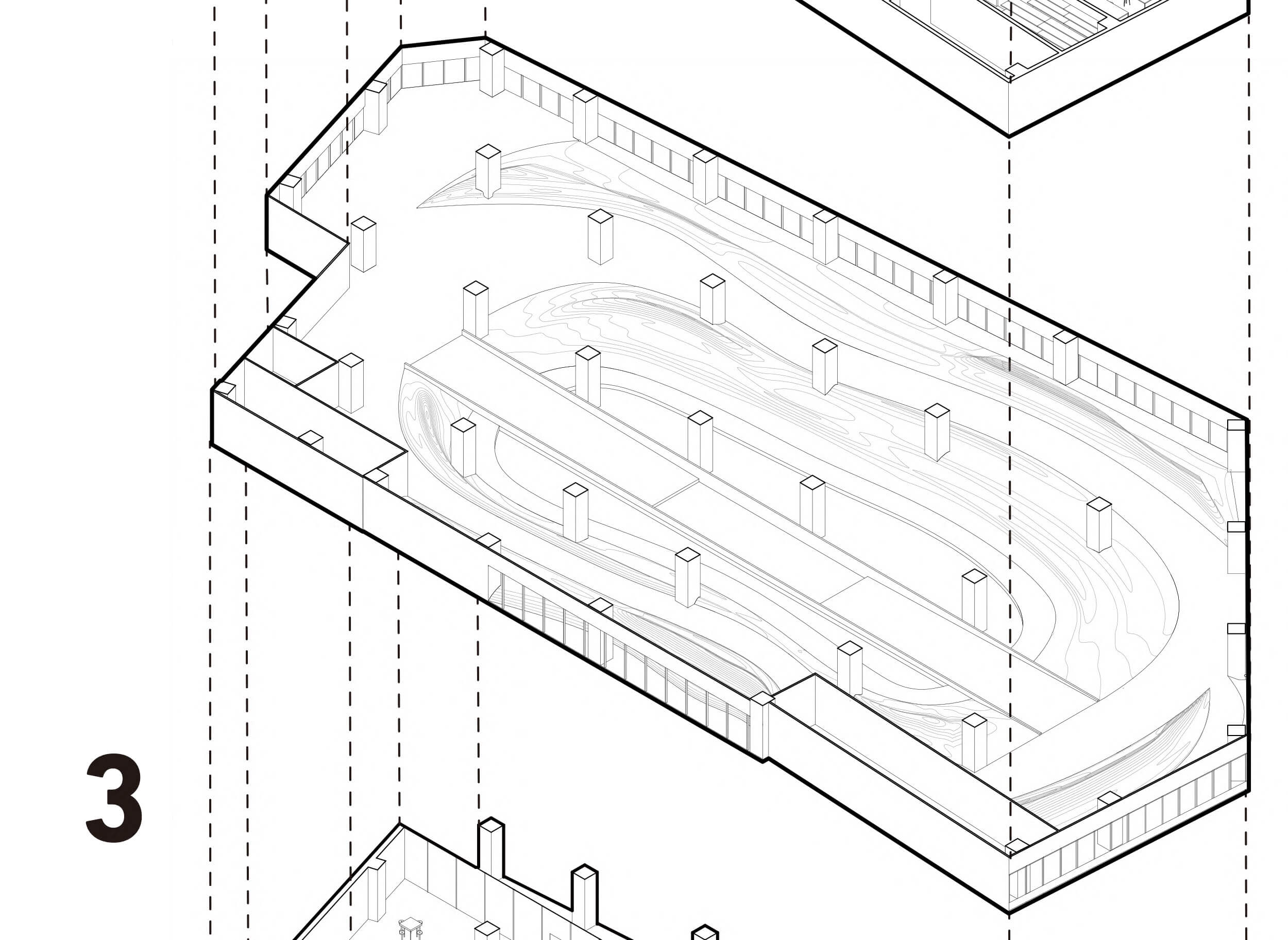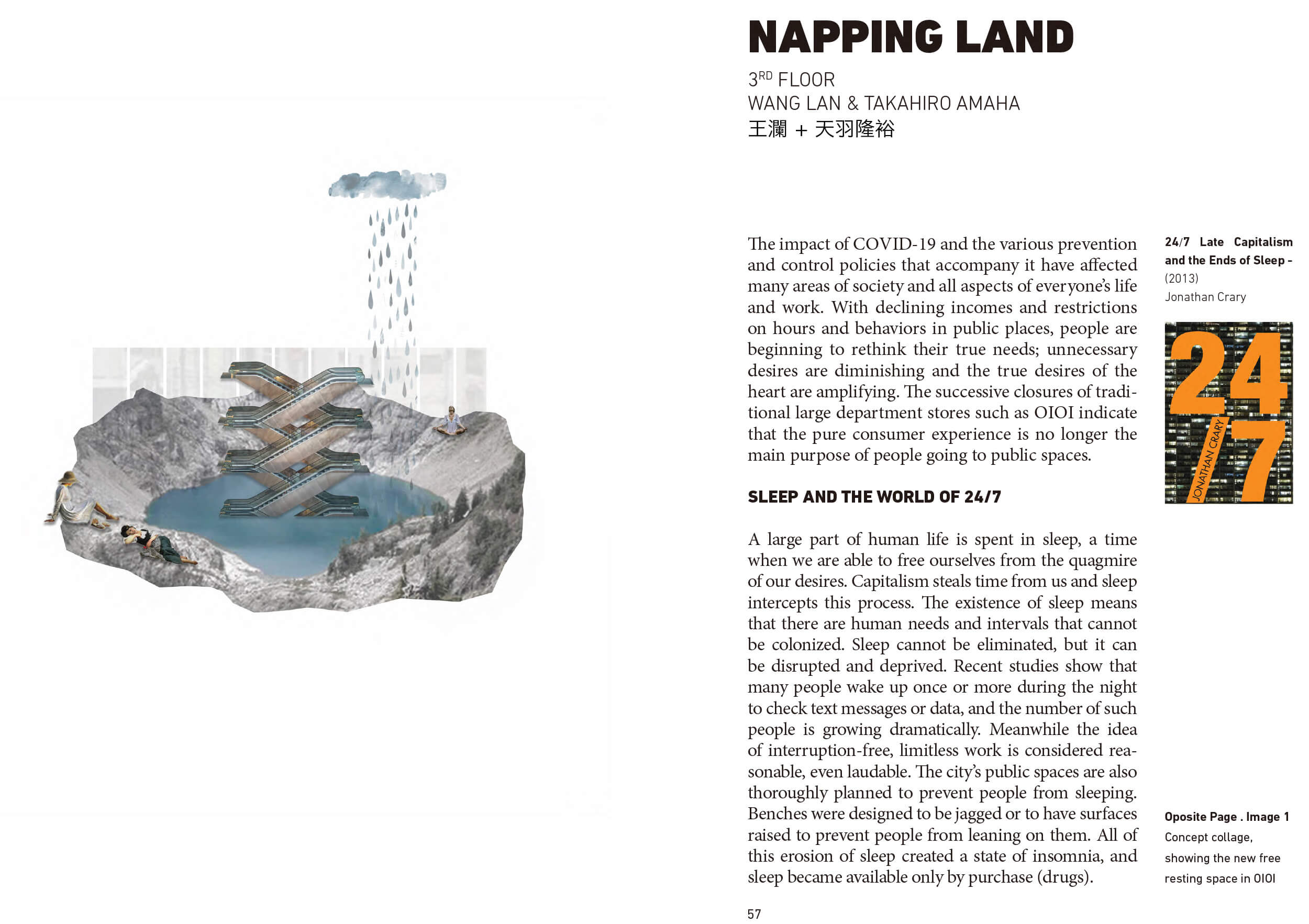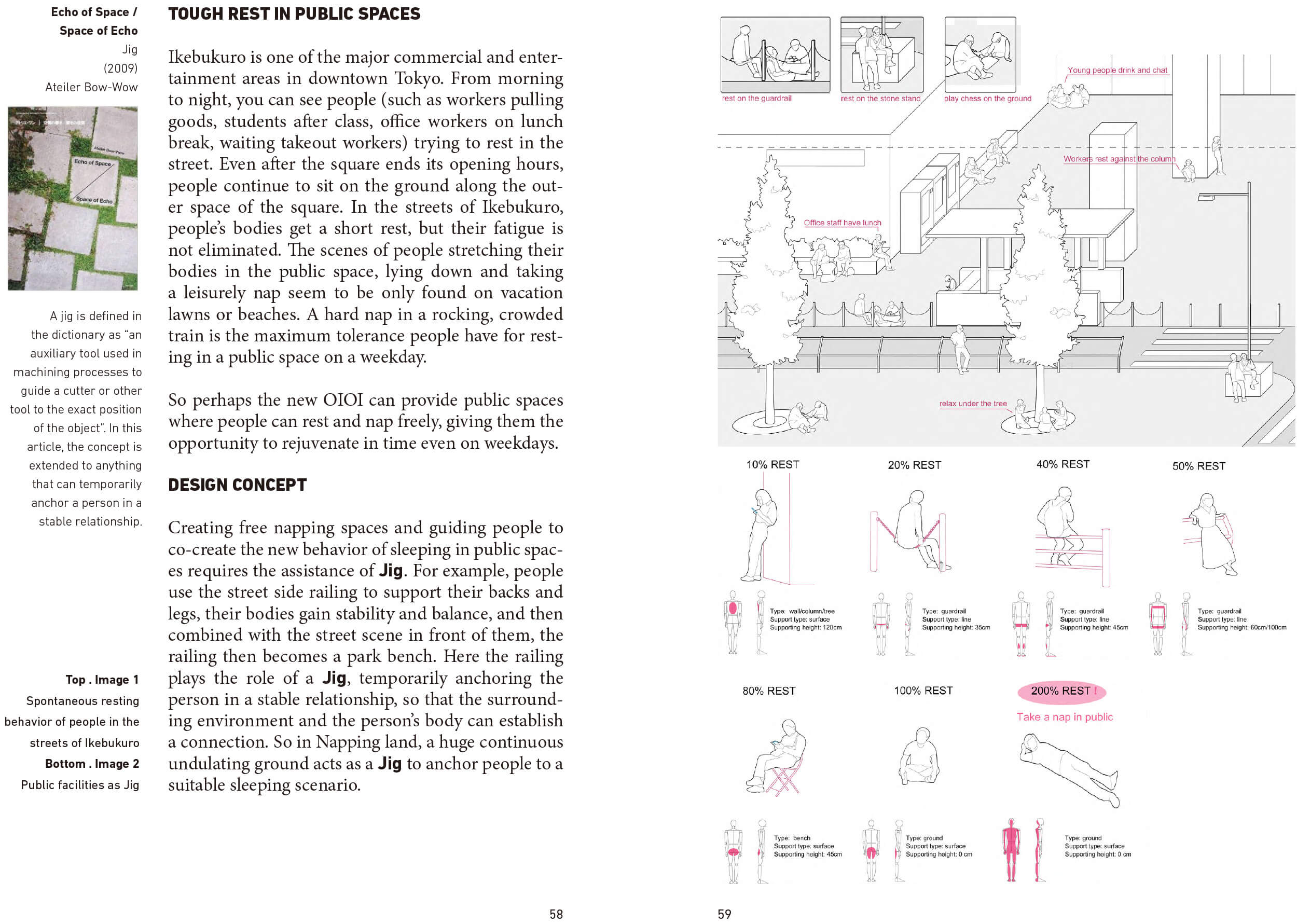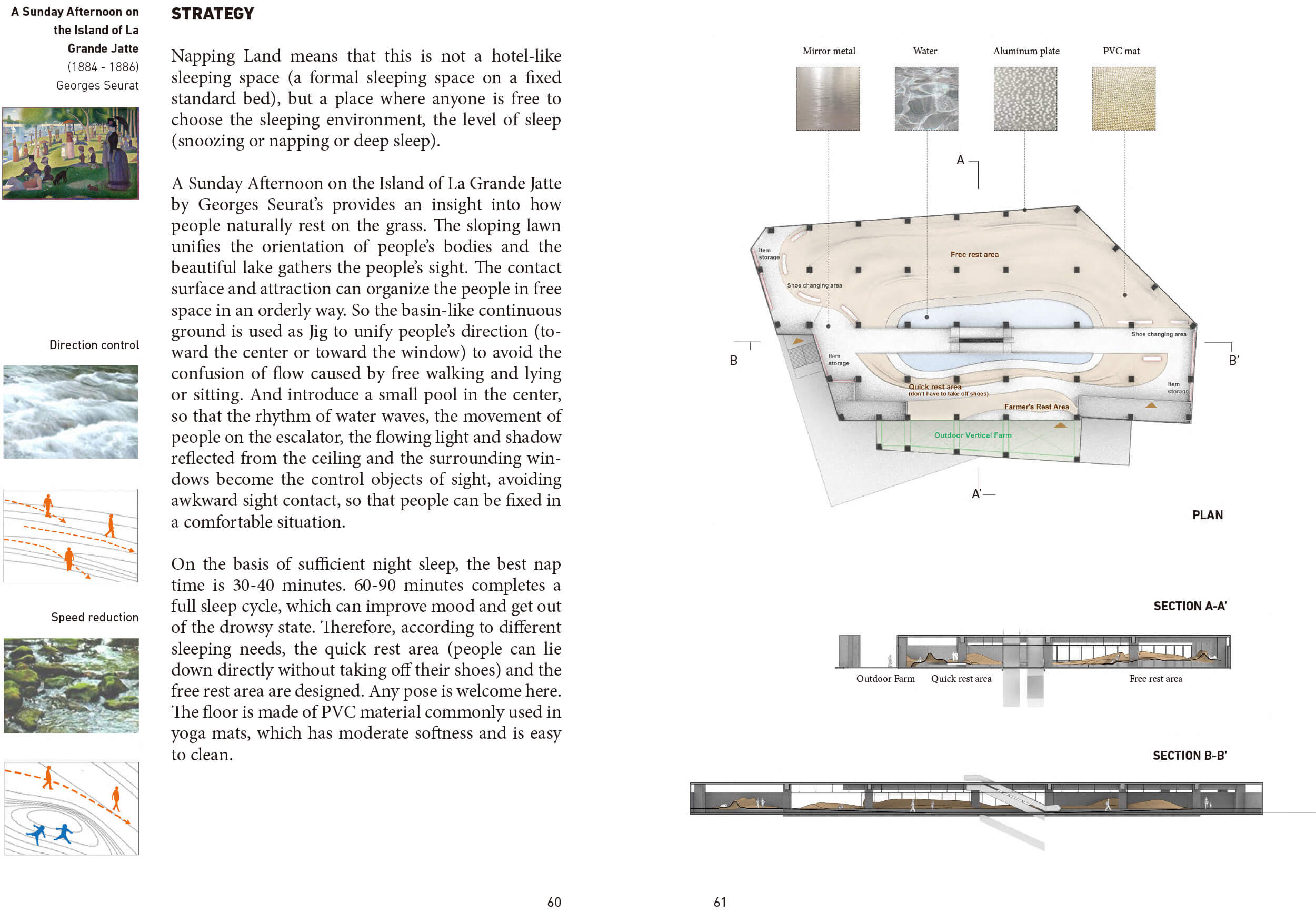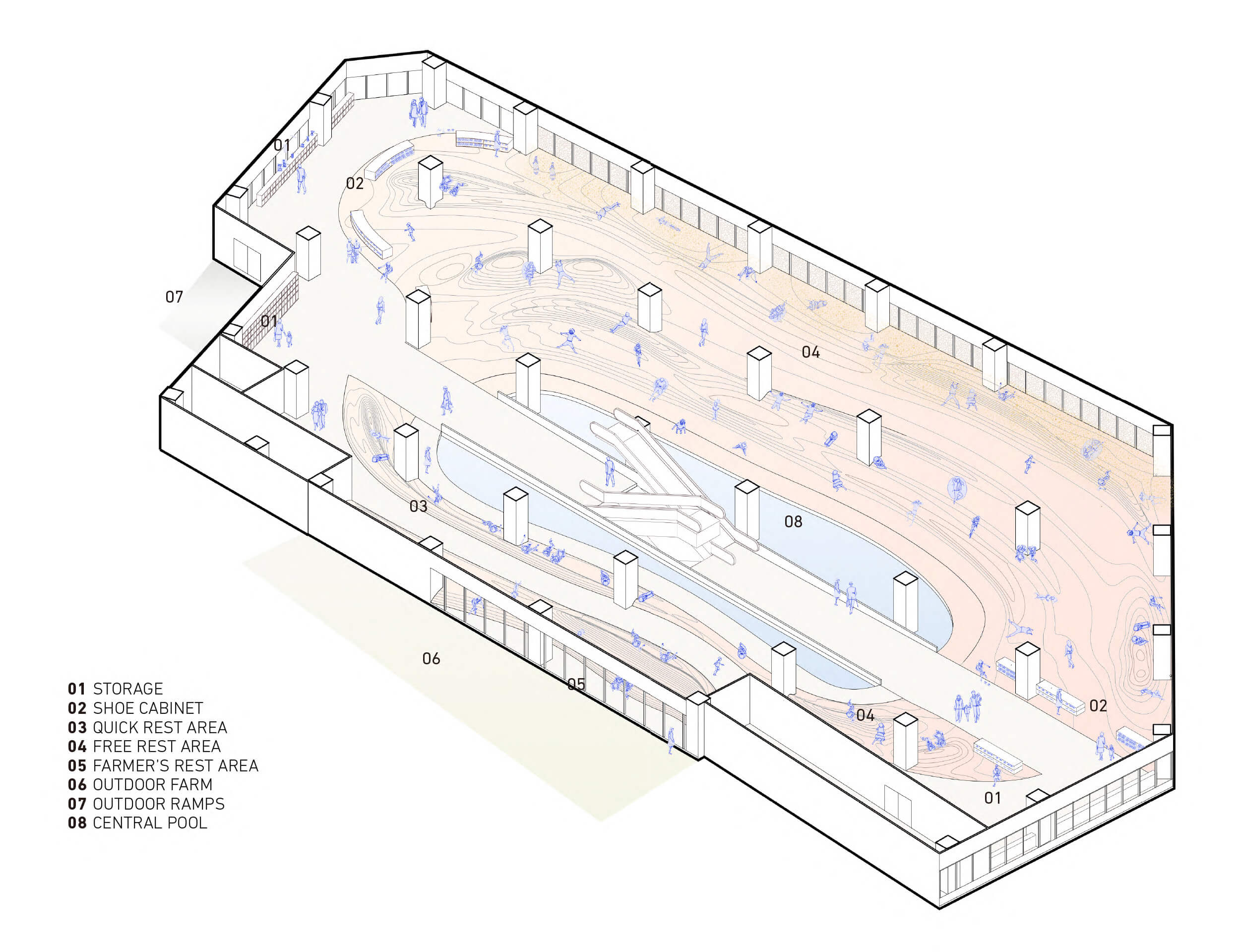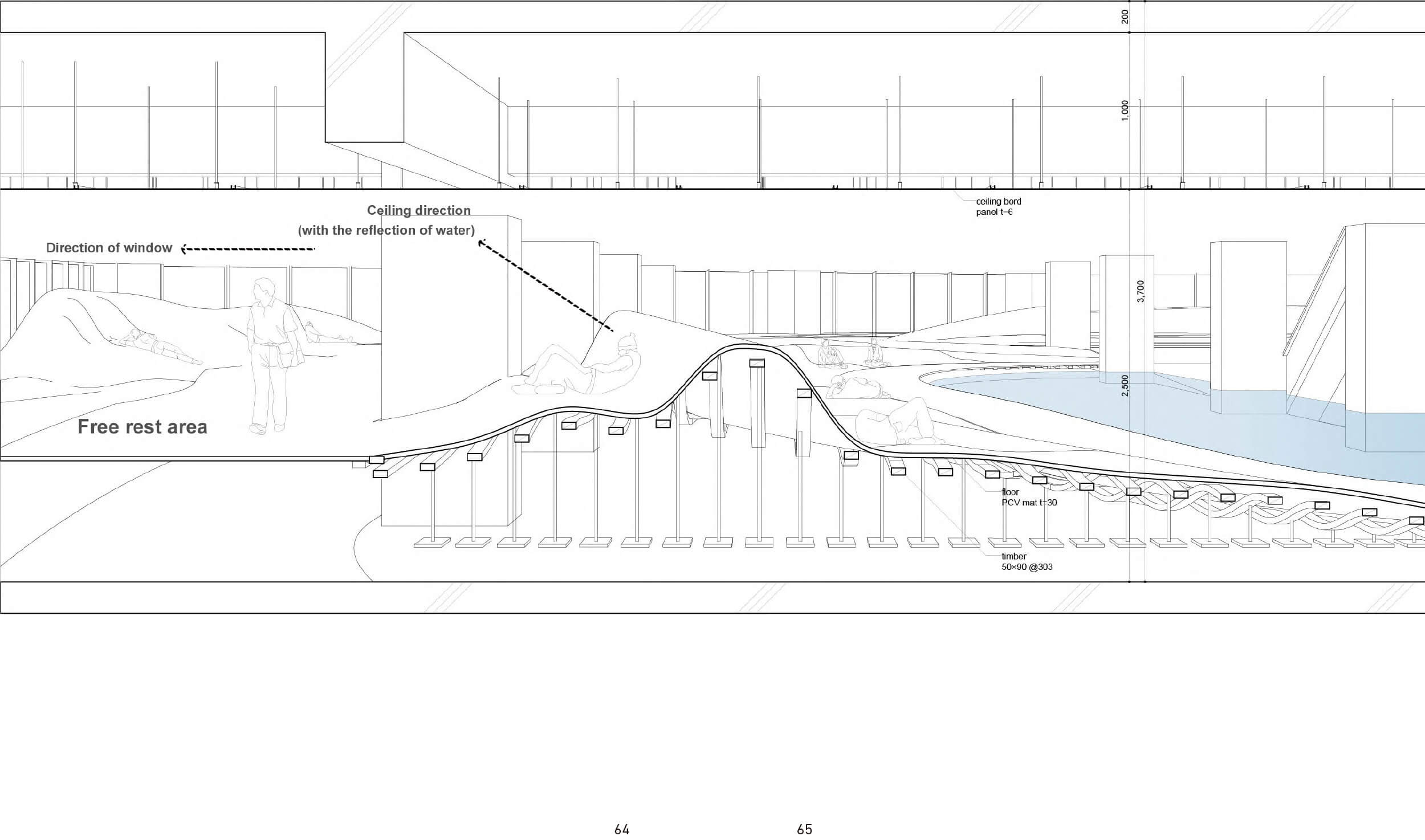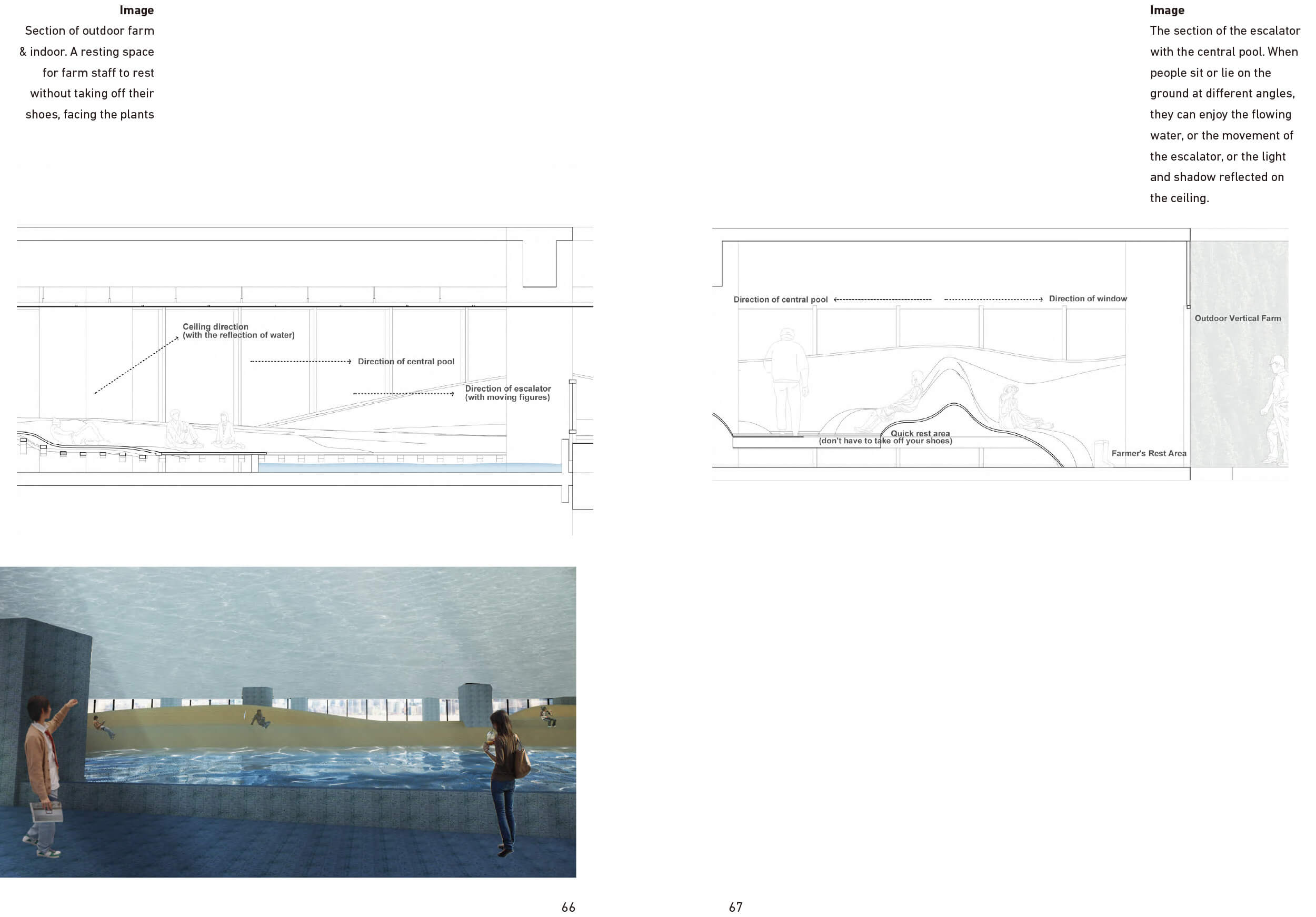TOUGH REST IN PUBLIC SPACES
Ikebukuro is one of the major commercial and enter- tainment areas in downtown Tokyo. From morning to night, you can see people (such as workers pulling goods, students after class, office workers on lunch break, waiting takeout workers) trying to rest in the street. Even after the square ends its opening hours, people continue to sit on the ground along the out- er space of the square. In the streets of Ikebukuro, people’s bodies get a short rest, but their fatigue is not eliminated. The scenes of people stretching their bodies in the public space, lying down and taking a leisurely nap seem to be only found on vacation lawns or beaches. A hard nap in a rocking, crowded train is the maximum tolerance people have for rest- ing in a public space on a weekday.
So perhaps the new OIOI can provide public spaces where people can rest and nap freely, giving them the opportunity to rejuvenate in time even on weekdays.
DESIGN CONCEPT
Creating free napping spaces and guiding people to co-create the new behavior of sleeping in public spac- es requires the assistance of Jig. For example, people use the street side railing to support their backs and legs, their bodies gain stability and balance, and then combined with the street scene in front of them, the railing then becomes a park bench. Here the railing plays the role of a Jig, temporarily anchoring the person in a stable relationship, so that the surround- ing environment and the person’s body can establish a connection. So in Napping land, a huge continuous undulating ground acts as a Jig to anchor people to a suitable sleeping scenario.
STRATEGY
Napping Land means that this is not a hotel-like sleeping space (a formal sleeping space on a fixed standard bed), but a place where anyone is free to choose the sleeping environment, the level of sleep (snoozing or napping or deep sleep).
A Sunday Afternoon on the Island of La Grande Jatte by Georges Seurat’s provides an insight into how people naturally rest on the grass. The sloping lawn unifies the orientation of people’s bodies and the beautiful lake gathers the people’s sight. The contact surface and attraction can organize the people in free space in an orderly way. So the basin-like continuous ground is used as Jig to unify people’s direction (to- ward the center or toward the window) to avoid the confusion of flow caused by free walking and lying or sitting. And introduce a small pool in the center, so that the rhythm of water waves, the movement of people on the escalator, the flowing light and shadow reflected from the ceiling and the surrounding win- dows become the control objects of sight, avoiding awkward sight contact, so that people can be fixed in a comfortable situation.
On the basis of sufficient night sleep, the best nap time is 30-40 minutes. 60-90 minutes completes a full sleep cycle, which can improve mood and get out of the drowsy state. Therefore, according to different sleeping needs, the quick rest area (people can lie down directly without taking off their shoes) and the free rest area are designed. Any pose is welcome here. The floor is made of PVC material commonly used in yoga mats, which has moderate softness and is easy to clean.
